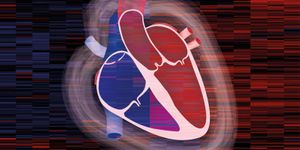Skin Cancer Got sKanned
Every year the James Dyson Foundation, named after the famed vacuum designer and engineer, gives tens of thousands dollar-worth reward to students who can think differently to create better products. This year the prize was awarded to a group of Canadians engineering graduates from McMaster University, for their work on sKan, an inexpensive, handheld skin cancer diagnostic device.
sKan, a heat scanner for skin cancer diagnosis. Credit: James Dyson Foundation
Skin cancer is the most common form of cancer, and patients usually have a high survival rate in the developed countries. It occurred as a result of the development of abnormal tissues that can overgrow and/or spread to other parts of the body. Based the cell types involved, skin cancer can further be categorized into three main kinds: basal-cell skin cancer, squamous-cell skin cancer, and melanoma. The first two are also known as non-melanoma skin cancer.
Right now, skin cancer is typically diagnosed first with a visual inspection, followed by a biopsy if deemed necessary by the doctor. A biopsy is an invasive, painful procedure to remove a piece of tissue or a sample of cells from a patient so that it can be analyzed in a laboratory.
Visual inspection of skin cancer is often deemed unreliable: a study found that in the U.S. between 1986 and 2001, there were more than 60 biopsies done for every melanoma detected. Even with biopsies, there are still chances doctors cannot provide an accurate diagnosis.
The sKan team were looking for a final year project before completing their engineering degree and decided to go with the scanning device for skin cancer, due to the challenge it presents for accurate diagnosis.
The idea behind the device is that after human skin has been cooled, cancerous lesions warm back up again more quickly than normal skin because of its high metabolic rate. In the late stage melanoma skin cancer, cancer tissues tend to build dense vasculature around themselves to ensure the supply of nutrients and energy. Both characteristics make them the prime target for infrared-based thermal detection mechanism.
Studies done by others had utilized expensive infrared cameras, which were showed to diagnose skin cancer with a certain degree of success. But the sKan team came with an inexpensive device by using multiple thermistors - tiny electronic components that change their resistance when their surrounding temperature changes. When Rotimi Fadiya, the student group leader, was interviewed by CBC, he said: "The pieces that we're using you can get for like $1 apiece. Even smaller, more sensitive thermistors don't cost more than $10 or $20.”
There are sixteen thermistors are arranged in a grid pattern, creating a map of different temperatures in different areas of the sensor. Since every thermistor responds a little bit differently to temperature, so calibrating all 16 of them properly was proven tricky.
Commenting on the design of sKan, James Dyson, the founder of the James Dyson Foundation, said: "It's a very clever device with the potential to save lives around the world."
The team’s mentor Raimond Wong, a scientist with Juravinski Cancer Centre in Hamilton, Ontario is proud of his students. A device that works the way sKan is supposed to would help patients and doctors monitor suspicious moles over time and send the right patients for a biopsy rather than sending everyone, he said. He is confident that with his team's planned improvements to the design, future models will have the potential to save lives.
With the award money, the recent engineering graduates hope that they can develop a more advanced, sensitive prototype with better calibration and (hopefully not too much) more expensive thermistors. To validate their design in doctor's offices would be their next goal.
Is this mole cancer? Credit: Tech Insider
Source: CBC









